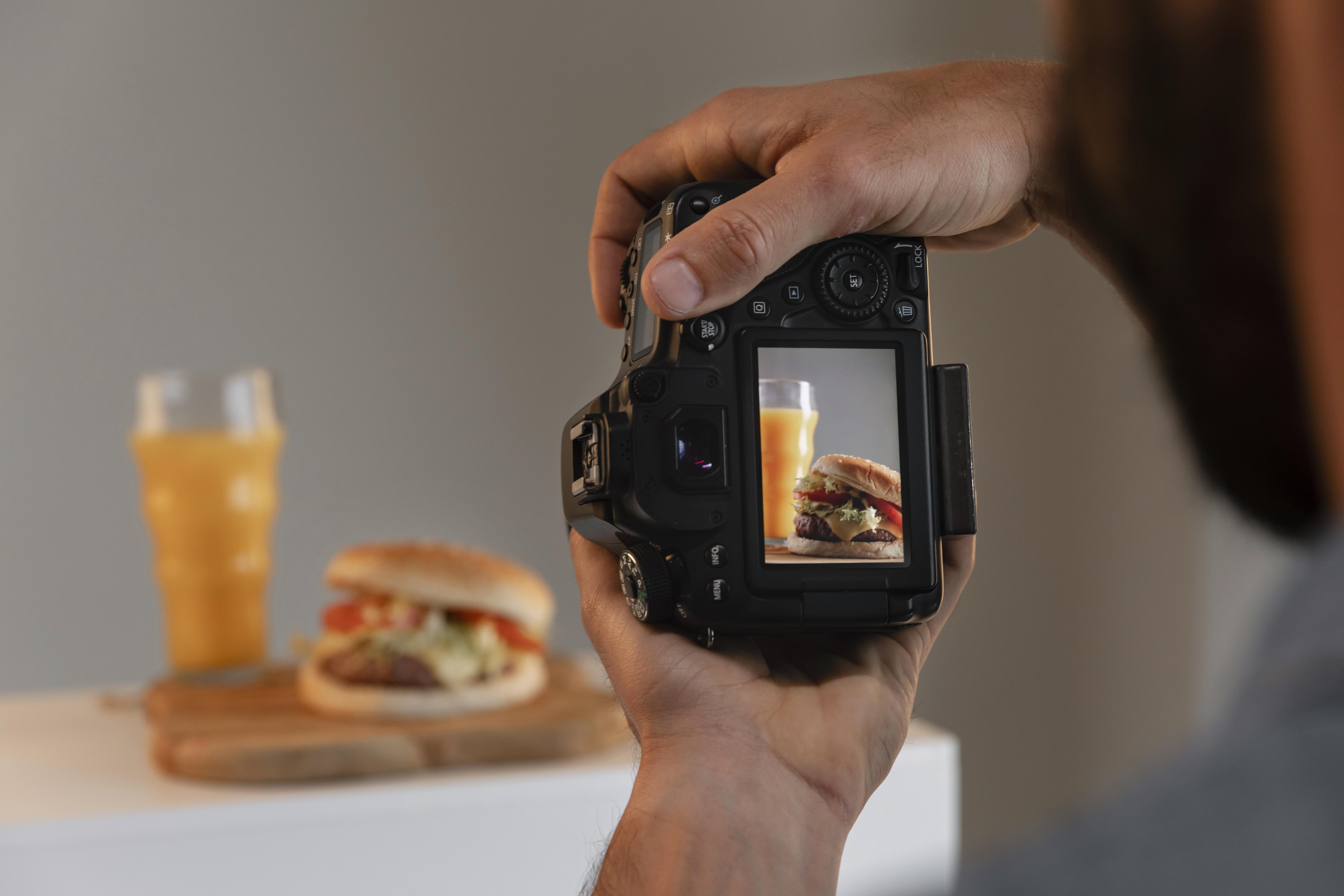Product photography
Why it is importance in advertising
In order to understand how product photography is used in advertising and why it is so crucial for encouraging customers to opt for services or products, it is essential to grasp the meaning of some concepts:
Product photography
It is a type of photography that focuses on faithfully presenting the characteristics of a particular product, such as shape, colour, texture, transparency, etc. Product photography is a key element in any business. Thanks to it, potential customers can see in detail what the product they want to buy looks like, which can expedite the purchasing decision.
Advertising photography
It is intended to showcase a product or service in the most attractive way possible to convince the customer to buy it. It aims to persuade the customer to feel the need to acquire the specific product or service. Furthermore, it is also a key piece in advertising since it generates the desire to purchase in the end consumer. In this type of photography, the priority is to make the product catch the audience's eye.
What is ads photography?
In truth, it's not very mysterious. It is, obviously, product photography where one must showcase an object faithfully but also make it visually appealing to guide consumers towards making a purchase. Additionally, it is important to focus on highlighting the most representative features of the product, as predetermined by the advertising agency. As we've seen, product photography must faithfully present its characteristics, but what does it mean to represent the object faithfully?
It's quite simple, basically meaning that the photos brands show us of their products must resemble reality as closely as possible. For example, if a package of cookies contains ten units, we can never take a photo showing twenty because that wouldn't be honest and transparent with the customer. In other words, exaggeration is not allowed, at most under-representation, and always depending on the circumstances.
In summary, the four main objectives of product photos are:
Spark the interest of consumers in the product.
Visual description: provide maximum information about the product
Bring the product closer to the buyer to make them feel acquainted with the item.
Differentiate it from the competition based on its quality and perfection.
Another aspect to consider is that advertising photography should be consistent, meaning it should have the same aesthetic in various photos of the campaign.
How to ensure that all campaign photos are similar?
Typographies follow a design based on certain criteria and elements:
- A photographic studio is needed. It is advisable for the studio to be of neutral gray colour because it reduces reflections and eliminates any unwanted chromatic dominance.
- Natural light cannot be used because it is too variable. It is better to use artificial light; therefore, working in a studio is necessary. A flashlight should be used, and any other light should be turned off. If necessary, block windows or use black velvet curtains.
- Avoid reflections to prevent burning the photographs. A good post-production job is essential.
- Photo editing doesn't perform miracles, but it can significantly enhance the appearance of an image.

Tips for representing an object faithfully
Typographies follow a design based on certain criteria and elements:
- Always use normal or telephoto lenses (50mm and above) to avoid perspective distortions caused by wide-angle lenses at close distances.
- If an object is rough, use backlighting to highlight its texture.
- Remember that side lights add volume to objects, creating lights and shadows.
- Take photos with a lot of depth of field so that all elements in the image are seen in great detail.
- Reserve hard light for completely matte objects. Any pinpoint glare on a reflective surface is usually disturbing. Unlike soft or diffused light, hard light penetrates directly into the product, emphasizing the silhouettes and shadows of the image.
The battle against creative product photography
To stand out in the advertising world, having innovative and creative ideas is essential. Thanks to them, a sentimental attraction is generated with the audience, contributing to customer loyalty. There are many exercises and techniques to enhance creativity that are often carried out in advertising agencies.
Through these techniques, professionals manage to create concepts that they would never think would work in a campaign. They are techniques that allow the mind to open up and let go. As Albert Einstein said, "Creativity is seeing what everyone else has seen and thinking what no one else has thought."
In the case of product photography, although it is related to advertising and the world of marketing, it is better to set aside creativity and show the product as it is, without embellishments. Unless the client expressly requests or allows creative freedom, changes to the structure of the object should be avoided.
In the following example, the image on the left is heavily prepared and edited, to the point that it does not represent the reality of the product.

The importance of background, light, and supports
To succeed in product photography, having a good background is essential. Depending on the desired final result and the characteristics of the product, the background colour could vary. Nonetheless, it is advisable to obtain a neutral background, either white or black.
White background is mainly used for photographing objects with intense colours and food. Elements appearing on white backgrounds are much easier to cut out and subsequently integrate into catalogues, websites, magazines, etc. Black background adds sobriety to the photo and achieves very elegant effects, especially with transparent products. In the case of bottles, a black background subtly highlights their reflections and enriches their characteristics.
On the other hand, a significant investment in materials is not necessary to create a clean and beautiful background for product photos. With a couple of cardboards, a stable support, and good lighting, extraordinary results can be achieved—the key is in practice and talent. Regarding lighting, as mentioned earlier, it is important to <strong>avoid natural light</strong> because it cannot be controlled; one must adapt to it, not the other way around. Therefore, artificial lighting, both strong and diffused, should be used depending on what one wants to convey with the image.
Finally, supports are indispensable tools for taking good product photos. It is normal to take some time to get the desired angle; patience is necessary—the perfect angle is there, you just have to find it. Also, thanks to the use of tripods, long exposures can be taken, and various shots can be captured while maintaining the same framing and angle. As advice, it is better if you can use a remote control to take the photo, thus avoiding camera shake when pressing the button.
When taking photos, it is important that they are in RAW format and not in JPG, why?
For image quality
The RAW format does not compress the photo, unlike JPG, and by using it, you are assured of capturing all possible quality and information.
Because it allows subsequent changes
Thanks to the RAW format, photos can undergo retouching and adjustments that would not be possible with other formats. Changes in exposure, white balance, temperature, saturation, noise reduction, etc., can be applied to the image.
Post-production, the final phase
After preparing the set and conducting the photo session, an interesting and decisive part for the result comes: post-production, that is, the manipulation of materials or, in other words, editing.
It will always be necessary to go through the editing phase, even for high-quality photos; it is strictly necessary to refine every tiny error, especially in this type of photography where detail is a priority.
In this phase of the process, tools can be used to adjust whites, define shadows, clean up image noise, highlight what needs to stand out more, reframe the image if necessary, and many other things offered by professional programs like Photoshop or Lightroom.
That being said, although editing programs work very well, especially if they are good, the starting point (the photos) needs to be of good quality because in post-production, the image can be changed a lot, but miracles cannot be performed.
After editing the photos, the only thing left to do is to select the best shots that fit the format where they will appear and create montages by adding text if necessary. By following all these tips and paying attention to details, it is possible to take very attractive product photos that lead potential customers to make a purchase, which is the main goal of advertising.



